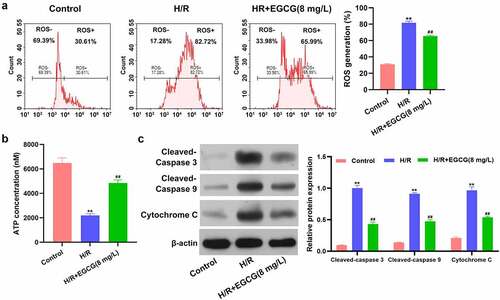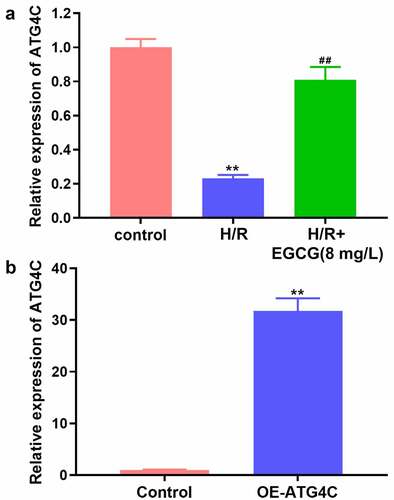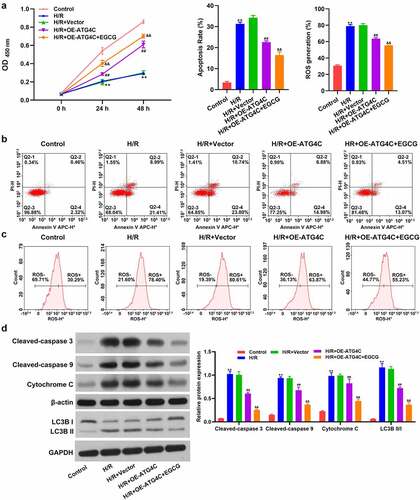Figures & data
Figure 1. EGCG suppressed H/R-resulted H9c2 cell viability reduction and apoptosis

Figure 2. EGCG lessened H/R-resulted ROS generation, ATP loss and mitochondrial damage

Figure 3. EGCG reversed H/R-resulted reduction of ATG4C expression in H9c2 cells

Figure 4. Overexpression of ATG4C strengthened the beneficial influence of EGCG on H/R-treated H9c2 cells

